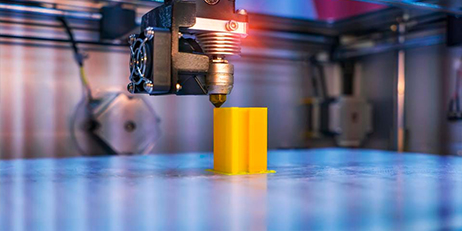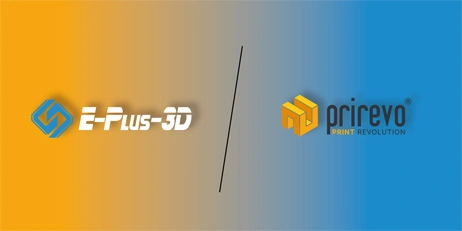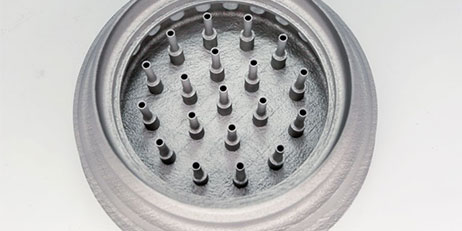1. Laser-based powder bed fusion technology for metal additive manufacturing
Metal powder bed fusion is a 3D printing process that produces a solid that uses a heat source to fuse metal powder particles one layer at a time.
The technology includes the following metal additive manufacturing methods: Electron Beam Melting (EBM), Direct Metal Laser Sintering (DMLS), Selective Laser Melting (SLM).
Both Direct Metal Laser Sintering (DMLS) and Selective Laser Melting (SLM) produce objects in a similar way to SLS (Selective Laser Sintering). The main difference is that these types of metal additive technologies are suitable for the production of metal parts. DMLS does not melt the powder, but heats it to such an extent that it can fuse together at the molecular level. SLM uses a laser to achieve complete melting of the metal powder, resulting in a uniform part. This results in a part with a single melting temperature.
The main difference between DMLS and SLM, the former produces parts from metal alloys, while the latter forms single element materials such as titanium.
2. Metal additive manufacturing and metal binder injector
This metal additive manufacturing method is similar to that of 2D inkjet printers. Metal powder is jetted onto the build platform for more complex 3D printing processes. The method operates as its name suggests, with a focused energy source, such as a laser or electron beam, being directed over a building to melt it, passing through layers at the same time as layers are deposited. This technique is often used to repair or add additional material to an existing structure. Directed Energy Deposition (DED) uses heated nozzles to deposit molten material, usually titanium or cobalt-chromium, on a specific surface where it solidifies.
Print objects with continuous or drop-on-demand (DOD) methods. The binder jet moves the print head over the powder surface, depositing binder droplets typically 80 microns in diameter. These droplets bind the powder particles together to create each layer of the object. After printing one layer, put down the powder bed and spread a new layer of powder on top of the newly printed layer. Repeat this process until a complete object is formed. The object is then left in the powder to solidify and build strength. Afterwards, the object is removed from the powder bed and compressed air is used to remove any unbound powder.
One of the unique benefits of binder jetting is the elimination of any melting of the metal powder, which could lead to build-up of residual stress. It is also one of the cheapest metal additive manufacturing technologies.
3. Sheet lamination for metal additive manufacturing
This method builds objects by layering layers of materials together by bonding, ultrasonic welding or brazing. The lamination method is a low temperature process that bonds different materials together. Typically, sheet lamination methods are used for visual and aesthetic models rather than structural uses.
4. Directed energy deposition for metal additive manufacturing
Metal additive manufacturing methods can be divided into methods for adding metals, which include adhesives, heated nozzles, or lasers. Below are some of the most common metal additive manufacturing techniques. Depending on the technique employed, the resulting printed portion can be net shape or near net shape.























